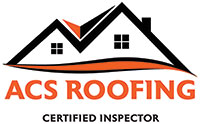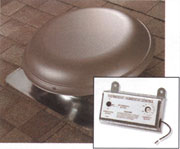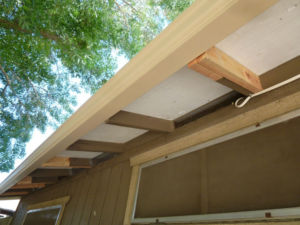Cooling Your Home With Vents
Eave Vents
Eave vents are a crucial part of keeping a balanced airflow system in your attic. They allow air to come into the conditioned air space near the bottom of the attic. Without these vents, air may not come in at all, which will lead to a very hot attic space and potentially cause major burnout problems. Also, if there are no intake vents, air may come in through an exhaust vent, defeating the purpose and effectiveness of said exhaust ventilation.
O’hagin Vents
O`hagin vents are a brand of “low profile dormer vents” that are commonly used for ventilation purposes. They can be used as either intake or exhaust ventilation and provide very good air flow without detracting from the overall look of a roof. If your roof does not have adequate space for a continuous ridge vent,
O’hagin vents are a great way to exhaust air, valuably contributing to a balanced airflow system.
Continuous Ridge Vents System
Ridge vent systems are used as exhaust ventilation and provide very thorough air exhaust to attic spaces. Our preferred system, using the Shingle Vent II product, allows for continuous exhaust ventilation along the entire ridge line. Exhaust ventilation is vital to any roof system. It allows hot air to leave the attic, and will contribute to a balanced airflow system. Having the correct amount of exhaust is also very important. There can be TOO MUCH exhaust ventilation on a house. If there is an unbalanced system, the exhaust ventilation may end up pulling air from other exhaust sections, effectively creating a non- functional system. This is why intake and exhaust ventilation are needed to be balanced and also why attic ventilation assessments are important.
Ridge vent product installed before ridge material. It includes wind baffles as well as internal water infiltration protection.
Solar Attic Fans
Solar attic fans are an effective way to create exhaust ventilation in a confined area. They are powered using solar energy and typically come set with an internal thermometer that will kick on the fan once the attic temperature reaches a certain temperature. These are not as common as low profile vents, but can be used effectively in tricky areas.
Solar attic fan near the ridge line. Also showcasing O’hagin vents used as intake and a skylight near a valley area.
Powered Attic Fans
Power attic fans move a high volume of air to keep the attic cool and dry. Electric-powered attic vents use a thermostat to fight heat and a humidistat control (“All Season” model only) to help prevent moisture buildup inside the attic.
Featuring a low-profile dome, the power attic vent is unobtrusive when installed on the roof face slanting away from the front of your home. It’s an efficient option to replace wind turbines or roof pots already in place.
The All Season™ model combines automatic thermostat and humidistat to protect attics from excess heat and humidity year-round.
Roof-mount power attic ventilators are available in several CFM capacities and dome colors that blend with the color of your roof shingles.
Air Vent power attic fan
Eave vents located between barge rafters. Typical eave vent style and installation during a re-roof process.
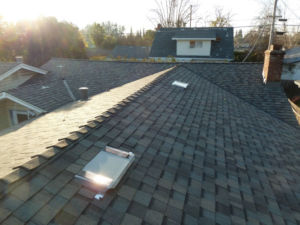
Two O’hagin vents used as exhaust ports on a composition roof.
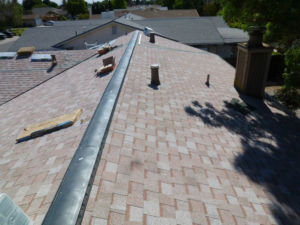
Ridge vent product installed before ridge material. It includes wind baffles as well as internal water infiltration protection.
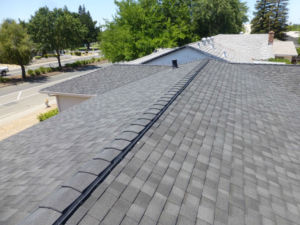
A different roof with the Shingle Vent II as well as the finished ridge material installed.
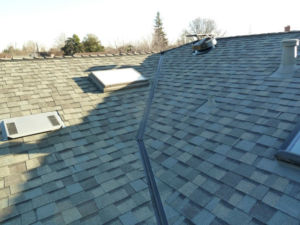
Solar attic fan near the ridge line. Also showcasing O’hagin vents used as intake and a skylight near a valley area.

